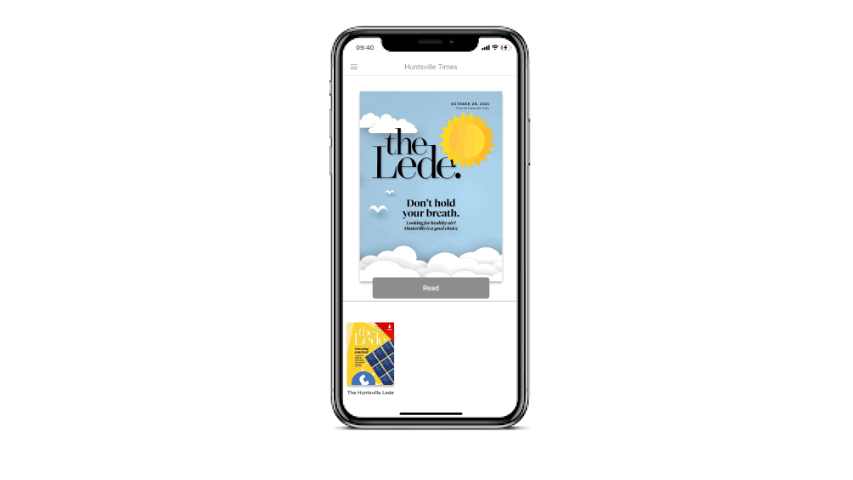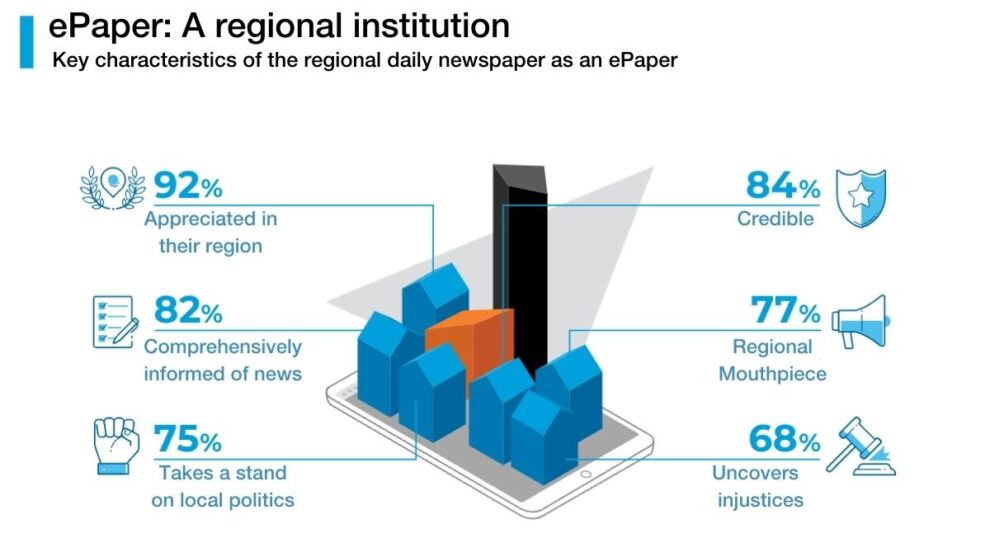Blog
Why leveraging the ePaper can be vital in defining the new role of print
America’s top 25 titles have lost 30% of their print sales in 2 years. In a new article in the ePaper in the spotlight series we explore how ePaper can become a strategic tool in the process of transitioning to a digital first strategy and defining the new role of print.
1. The potential reach of ePapers in huge
In Germany, BDZV found that 1 in 4 people had used an ePaper at least once over the course of a month. 40% of these readers said that they had subscriptions, whilst 27% bought individual issues. Similar to print editions, the actual reach of ePapers is predicted to be higher than reported. This is because ePapers, much like the print paper, are often shared with family and friends. 39% share their ePaper with people in their own household, and another 8% said they share their ePaper both inside and outside the home. Despite the digital nature of the ePaper, it still has a sociable nature and brings the news direct to your living room.
2. Finite experiences are needed in a world of updating news bulletins
“The endless stream of content is not working anymore” Christoph Mayer of Schickler told the INMA Subscription Summit last month. In the world of 24/7 news bulletins, it is impossible to be fully up to date with the news. People can therefore easily become disinterested in the news. Finite experiences in the form of ePaper products offer a great break to this endless cycle of news. With a finite news product, readers can consume news, feel informed, and then wait for the next day’s news. After all, what happens today will always be properly reported tomorrow.
L.V. Navaneeth, CEO of The Hindu explained that people value the ePaper as it remains an editorially curated product. Subscribers to The Hindu trust their editors to curate the news for them so they don’t have to sift through endless new cycles. That’s why The Hindu’s ePaper and the finite experience it provides remains so popular with subscribers. The Indian publisher have seen the demand for their ePaper be 1.5x higher than the demand for website and daily news apps.
“While we live in an era of unlimited choice, we are also burdened by too much noise”.
L.V. Navaneeth, CEO, The Hindu
3. New technology makes it possible to better understand ePaper readers
Unlike print editions, ePapers offer publishers the possibility to analyse, compare and evaluate the usage time of their readers more precisely. With tools like Twipe’s EngageReaders, it is possible to see how long readers stay on an article (even in PDF reading mode), which pages they scroll through quickly and which headlines inspire the reader. Journalistic success becomes measurable. These results can help publishers better adapt to the needs of their users. Publishers Kolner Stadt Anzeiger and Advance Local receive a precise analysis of their subscribers’ reading behaviour thanks to EngageReaders.

BDZV and ZMG found that people in Germany are heavy ePaper users. Almost 75% users read at least half of the newspaper. They also spend on average 37 minutes a day with their ePaper. These are significant figures as they prove that ePaper use is habitual and that they manage to keep readers engaged, much like a print edition. BDZV and ZMG’s study also found that inside ePapers, all sections of the day’s edition are engaged with. In Germany, the sections that were found to have particularly high engagement rates were the political sections and the regional and local topics.
4. ePapers as a gateway to new digital edition formats
The stereotype of an ePaper as an ugly duckling is outdated. ePapers can provide a truly digital experience. At Twipe, we have been studying the range of possibilities that digital newspapers can offer and one of the key areas has been looking at what the edition of the future may look like. Together with our customers, we experiment with different formats. With Advance Local, we used our NextGen Technology to develop The Lede, a digital-only news app that delivers the most important news and exclusive content not found in the daily newspaper.

Ouest-France’s L’Edition du Soir also differs from the daily newspaper. The French publisher noticed that a large proportion of readers consume their newspaper in the evening. So, they decided to create an edition specifically designed for reading in the evening: L’Edition du Soir. In order to actively respond to suggestions and criticism, an integrated field for comments was set up in each issue. Being flexible and open to change is possible thanks to direct communication in the app offering a more interactive experience.
With ePapers, non-subscribers are often unable to access any free content. L’Edition du Soir offer a certain number of free articles each week to let non-subscribers access the news and trial their product. Thanks to their paywall, the number of free articles grows if you register your e-mail address. With more than 5 million monthly readers, L’Edition du Soir is the most read digital-only edition in Europe.
5. Help keep local news thriving
This strong engagement with local news is reflected in the statistics on interaction with regional titles. 86% of people are interested in digital content from their own German region. The ePaper makes it possible for people to continue to feel connected to their hometown after moving away. 73% are also interested in news from other regions because regional news offers unique stories and insights.

Daniel Daum, Chief Digital Officer at Rheinische Post, emphasised this at the Digital Growth Summit. Thanks to this interest in local news, 92% see their local ePaper as a fixture in the region. It acts as a regional mouthpiece and takes a stance on issues like local politics. Users associate positive aspects with the regional newspaper, such as being credible (84%), comprehensively informed (82%) and revealing grievances (68%).
Other Blog Posts

Stay on top of the game
Subscribe to Twipe’s weekly newsletter to receive industry insights, case studies, and event invitations.
"(Required)" indicates required fields

